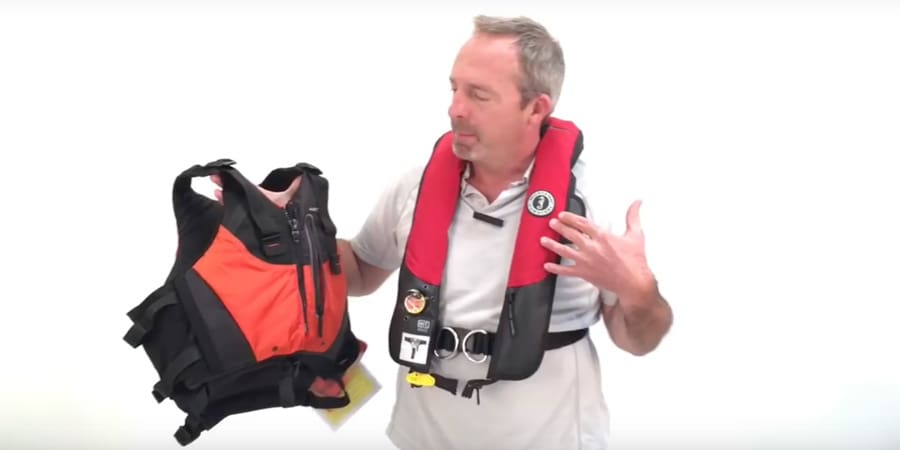In this video the Annapolis Performance Sailing expert will take you through the top considerations when choosing an inflatable PFD (life jacket). Are you sure you know everything?
Why choose an inflatable life jacket?
Traditional life jackets use inherently buoyant materials, such as foam (or Kapok), to keep the wearer afloat. Inflatable life jackets, as their name indicates, use inflatable bladders to provide buoyancy.
Inflatable life jackets are less bulky than traditional life jackets and more comfortable to wear. When not inflated, the bladder is compact and lightweight. Inflatables come in a variety of performance ratings. Many are USCG approved while some carry European certifications instead. The specific USCG rating of life jacket is determined by characteristics such as its amount of buoyancy, in-water performance and type of inflation mechanism.
Advantages of Inflatable PFD:
- High visibility when inflated
- Ability to have an integrated strobe light, spray hood, and AIS locating device inside the PFD’s housing
- Turns most wearers face-up faster than traditional life jackets
- Some will keep most unconscious users face up
- More comfortable than foam life jackets, and more likely to be worn
- Superior in-water performance
Disadvantages of Inflatable PFD:
- USCG does not recommended for children under 16 or people under 80 lbs
- Require inspection and maintenance
- Do not aid against hypothermia
- Need to keep rearming kits on board
